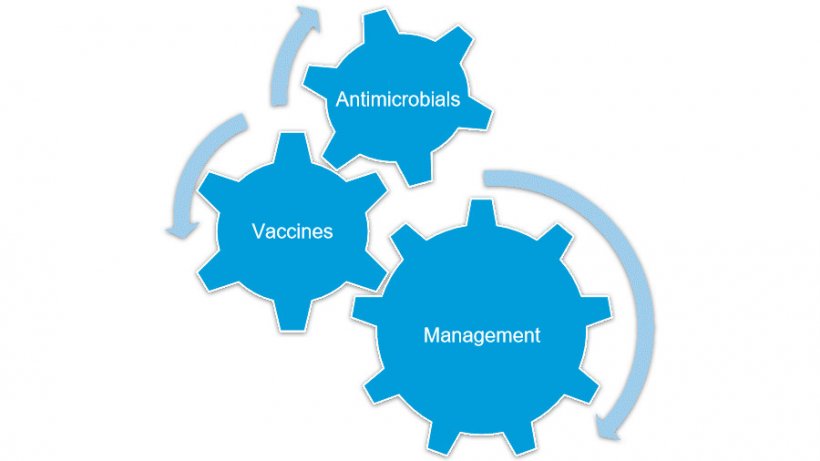Mycoplasma hyopneumoniae (M. hyopneumoniae) is the primary agent of enzootic pneumonia (EP), which causes a chronic respiratory condition in pigs characterized by dry cough, decreased average daily gain and increased number of days to reach market weight. M. hyopneumoniae infections are highly prevalent and present in almost every location in the world where pig production is established. Pigs infected with M. hyopneumoniae can exhibit clinical disease, however, in some herds the disease can be sub-clinical, which can go unnoticed, but production parameters will be still affected. Some of the hallmarks of the infection with M. hyopneumoniae are its chronicity and slow transmission rate among pigs, which accounts for the endemic picture observed in the field. Also important is to mention that M. hyopneumoniae co-infections with other swine pathogens, bacterial as well as viral, are quite common and are referred to as Porcine Respiratory Disease Complex (PRDC). Thus, M. hyopneumoniae infections are a significant contributor to the overall respiratory disease in pigs.

M. hyopneumoniae control approaches
Fortunately, several approaches can be used to attempt controlling M. hyopneumoniae infections and minimizing the effects of enzootic pneumonia and PRDC, without seeking disease eradication. There are three main strategies which are management, vaccination, and medication, that can be applied independently, but are usually combined in order to achieve greater disease control (Figure 1).

First, modifying management and housing factors can have important implications in respiratory disease dynamics. Thus, optimizing animal density, ventilation, pig flow, among others, can make a difference in disease transmission (not only caused by M. hyopneumoniae), therefore, results will be reflected in the herd, although total disease elimination may not be achieved.
Immunization against M. hyopneumoniae continues to be one of the most popular methods for EP control. Although current figures for vaccination rates may not be available for every country, it is assumed that application of M. hyopneumoniae bacterins reaches approximately 70% in most regions. Vaccine use generally improves production parameters and decreases the incidence of clinical signs and lung lesions. However, it is important to remember that vaccines will confer partial protection, thus disease will still be present, vaccinated animals can be colonized and infected.
Different vaccine products are commercially available for M. hyopneumoniae immunization, with the majority being killed vaccines or bacterins. Vaccination age and protocols vary widely, but in general, commercial pigs are vaccinated around weaning, and replacement females prior to entering the sow herd. However, determining optimal vaccination strategies continues to be the focus of research in the field, as well as it is in experimental settings, as swine production practices, pig genetics, incidence of concomitant disease and other factors continue to change.
Being caused by a bacterial agent, M. hyopneumoniae infections can be treated with antibiotics, but it has to be kept in mind that mycoplasma species do not have a cell wall. Therefore, careful selection of antibacterial drugs is key to avoid the natural resistance to certain antibiotics. It is crucial to recognize that while antibacterial agents will decrease bacterial loads in the lung tissue and will control overall disease, a total clearance of the pathogen will not be achieved, not even during the chronic phase of infection, when bacterial concentration in lungs is not at its peak. Nevertheless, the value of judicious antibiotic usage for disease control is significant and highly beneficial, especially in the phase of an outbreak.
Last, but not least, the definitive form of disease control is disease eradication, which for M. hyopneumoniae can be achieved with the use of various protocols, which of course includes the use management, vaccination and medication.
Conclusions
In summary, no single strategy will confer total protection from infection with M. hyopneumoniae or disease elimination. However, a well-orchestrated combination of various methods, not only directed at clinical signs, but to the root of disease spread and transmission, adjusted to the unique characteristics of a production unit or system, is necessary to reach the goal of controlling M. hyopneumoniae infections and improving overall swine production around the world.





